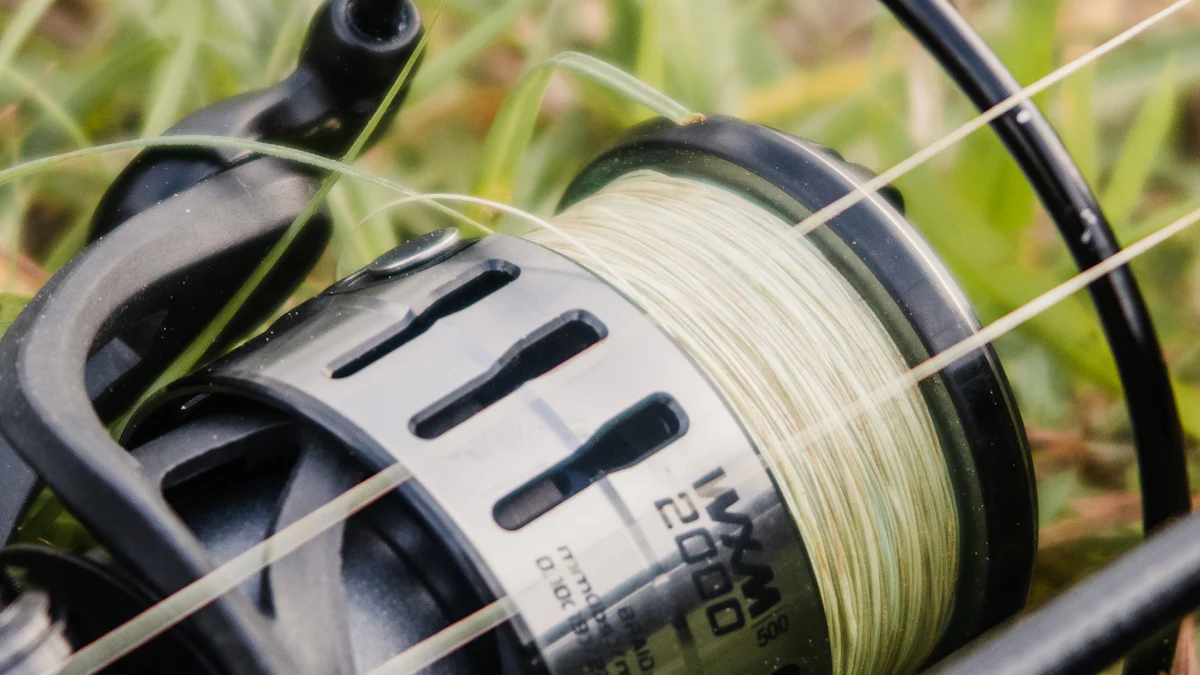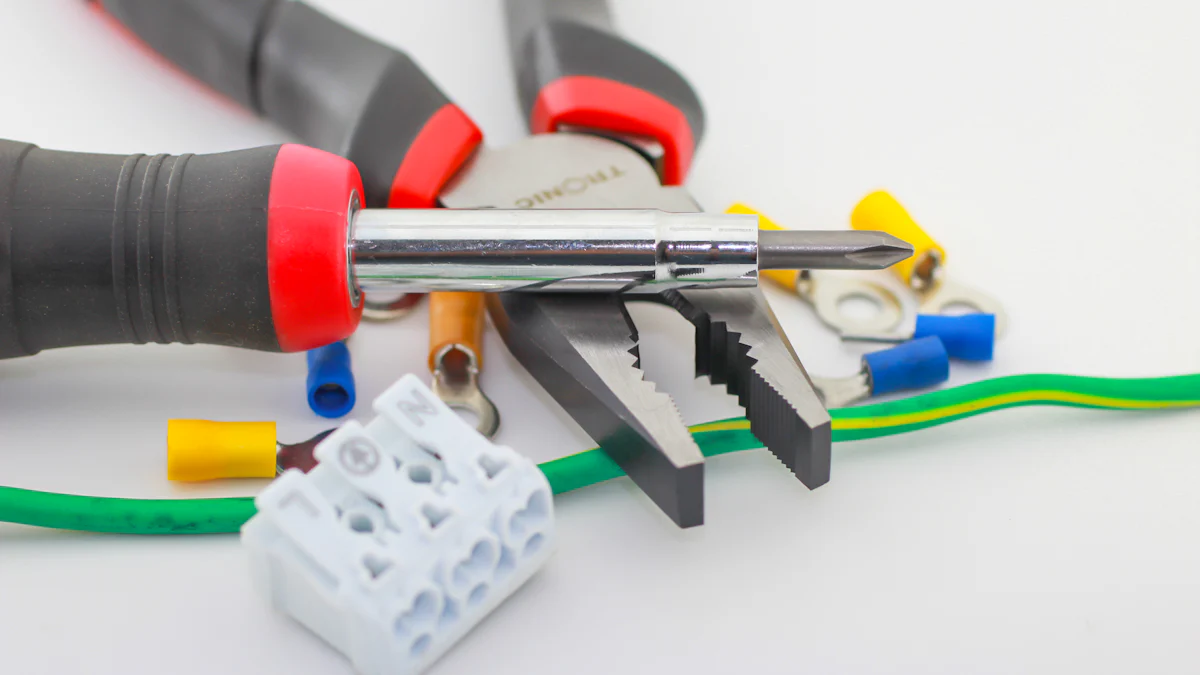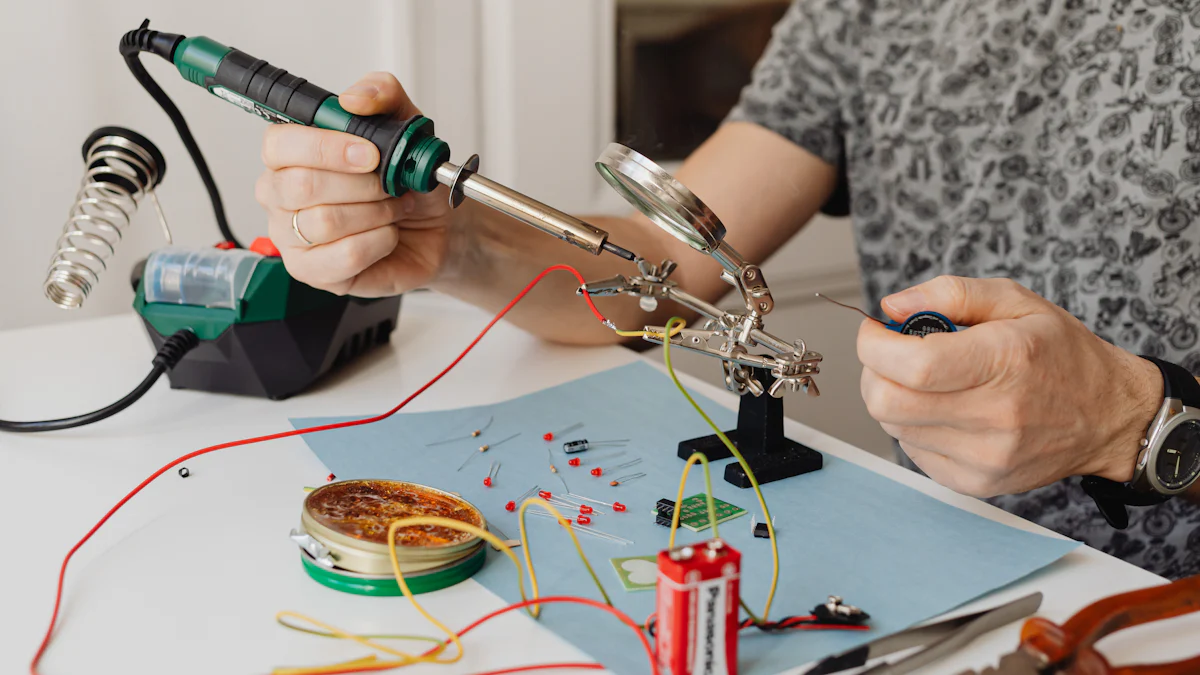9 Essential Tips for Using a Fiberglass Wire Puller

A fiberglass wire puller, also known as fish tape, serves as an essential tool for electricians and DIY enthusiasts. This tool is non-conductive and more flexible than nylon alternatives, making it ideal for various wiring scenarios. Correct usage ensures safety and efficiency during electrical installations. The purpose of this blog is to provide 9 Essential Tips for Using a Fiberglass Wire Puller effectively. The Duct Fish Tape 6mm 150m Pipe Ruter Fiberglass Wire Puller Wire Rope Running Rod with Wheel Stand offers a reliable solution for pulling wires through conduits.
Understanding Your Fiberglass Wire Puller

Components of a Fiberglass Wire Puller
Handle
The handle provides a firm grip for the user. A sturdy handle ensures control and precision during wire pulling tasks. The handle often features an ergonomic design to reduce hand fatigue.
Fiberglass Rod
The fiberglass rod serves as the main component of the wire puller. This rod offers flexibility and strength, allowing it to navigate through tight spaces without breaking. The Ferret - Cable Pulling & Fishing Tool exemplifies durability with its fiberglass-reinforced polymer construction.
Hook or Eyelet
The hook or eyelet at the end of the rod secures the wire for pulling. This component must be strong and reliable to prevent the wire from slipping. Proper attachment ensures efficient wire pulling through conduits.
How It Works
Basic Mechanism
The basic mechanism involves feeding the fiberglass rod through a conduit. The user attaches the wire to the hook or eyelet. Then, the user pulls the rod back through the conduit, bringing the wire along with it. This process simplifies the task of running wires through walls, ceilings, or floors.
Common Applications
Common applications include electrical installations in residential and commercial buildings. Electricians use fiberglass wire pullers to route new wiring or replace existing wiring. DIY enthusiasts find these tools invaluable for home improvement projects. The Ferret wire fishing tool excels in navigating tight spaces, making it ideal for complex wiring tasks.
Preparing for Use

Inspecting the Tool
Checking for Damage
Inspect the fiberglass wire puller before each use. Look for cracks, frays, or other visible damage on the fiberglass rod. A damaged rod can break during use, causing delays and potential injuries. Ensure the handle and hook or eyelet remain securely attached. A thorough inspection guarantees the tool's reliability and safety.
Ensuring Cleanliness
Clean the fiberglass wire puller regularly. Dirt and debris can accumulate on the rod, affecting its performance. Wipe the rod with a clean cloth to remove any contaminants. A clean tool reduces friction and makes the wire pulling process smoother. Proper cleanliness extends the lifespan of the tool.
Gathering Necessary Accessories
Lubricants
Use lubricants to ease the wire pulling process. Apply a suitable lubricant to the rod before starting the task. Lubricants reduce friction, allowing the rod to glide through conduits effortlessly. Choose a lubricant compatible with fiberglass materials to avoid damage. The use of lubricants enhances efficiency and reduces wear on the tool.
Protective Gear
Wear protective gear to ensure safety during wire pulling tasks. Heavy-duty gloves protect hands from sharp edges and burrs on the wire. Safety goggles shield eyes from potential injuries caused by flying debris. Proper footwear provides stability and prevents slips. Using protective gear minimizes the risk of accidents and injuries.
Essential Tips for Effective Use
Tip 1: Plan Your Route
Mapping Out the Path
Planning the route ensures a smooth wire-pulling process. Start by identifying the starting and ending points. Measure the distance between these points. Mark the path on a blueprint or sketch. This visual aid helps in understanding the layout.
Identifying Obstacles
Identify potential obstacles along the path. Look for bends, junctions, and other impediments. Knowing these obstacles helps in strategizing the pull. Avoid unnecessary holes by planning the route carefully.
Tip 2: Use Lubricants
Types of Lubricants
Lubricants reduce friction during the wire-pulling process. Silicone-based lubricants work well with fiberglass materials. Water-based lubricants offer an eco-friendly option. Choose a lubricant that suits the specific needs of the task.
Application Techniques
Apply the lubricant evenly on the fiberglass rod. Use a cloth to spread the lubricant. Ensure the rod is fully coated. This reduces resistance and makes the pull smoother. Adding lubricants, as noted by Sinta Zhang, enhances the efficiency of the process.
Tip 3: Secure the Wire Properly
Attaching the Wire
Attach the wire securely to the hook or eyelet. Use electrical tape to wrap the connection point. Ensure the wire does not slip during the pull. A secure attachment prevents delays and ensures a smooth operation.
Ensuring a Firm Grip
Maintain a firm grip on the handle. Use both hands if necessary. A steady grip provides better control. Avoid jerky movements to prevent the wire from detaching. Consistent force ensures a successful wire pull.
Tip 4: Apply Steady Pressure
Avoiding Jerky Movements
Jerky movements can cause the wire to snag or break. Smooth and controlled actions help in maintaining the integrity of the wire. A steady hand ensures a seamless pull through the conduit. This technique minimizes the risk of damage to both the wire and the tool.
Maintaining Consistent Force
Consistent force is crucial for effective wire pulling. Gradual and even pressure prevents sudden stops and starts. This approach reduces friction and makes the task more manageable. Consistency in force application leads to a more efficient and successful operation.
Tip 5: Work with a Partner
Coordinating Efforts
Working with a partner enhances efficiency. One person can feed the wire while the other pulls. Coordination between both parties ensures smooth progress. Clear roles and responsibilities streamline the process.
Communication Tips
Effective communication is key when working with a partner. Use clear and concise signals to indicate actions. Verbal cues help in synchronizing efforts. Good communication reduces misunderstandings and increases productivity.
Tip 6: Use the Right Technique for Bends
Navigating Corners
Navigating corners requires skill and precision. Gently guide the fiberglass rod around bends. Avoid forcing the rod, as this can cause it to break. Proper technique ensures the rod moves smoothly through the conduit.
Avoiding Kinks
Kinks in the rod can hinder progress. Maintain a steady pace to prevent kinks from forming. Regularly check the rod for any signs of bending or twisting. Keeping the rod straight ensures a successful wire pull.
Tip 7: Keep the Tool Clean
Cleaning After Use
Clean the fiberglass wire puller after every use. Dirt and debris can accumulate on the rod, affecting its performance. Use a clean cloth to wipe down the rod. Remove any contaminants to reduce friction during future uses. Regular cleaning extends the lifespan of the tool.
Storing Properly
Store the fiberglass wire puller in a dry, cool place. Avoid exposure to direct sunlight or extreme temperatures. Use a storage case to protect the rod from physical damage. Proper storage ensures the tool remains in good condition for the next use.
Tip 8: Regular Maintenance
Routine Inspections
Conduct routine inspections to ensure the tool's reliability. Check the fiberglass rod for cracks or frays. Inspect the handle and hook or eyelet for secure attachment. Regular inspections help identify issues before they become serious problems.
Repairing Minor Damages
Repair minor damages promptly. Use fiberglass repair kits to fix small cracks or frays. Tighten loose screws on the handle or hook. Addressing minor issues immediately prevents them from escalating into major problems.
Tip 9: Know When to Replace the Tool
Signs of Wear and Tear
Recognize the signs of wear and tear. Look for deep cracks, severe frays, or a weakened handle. A compromised tool can break during use, posing safety risks. Identifying these signs early helps in deciding when to replace the tool.
Safety Considerations
Prioritize safety when using a fiberglass wire puller. Replace the tool if it shows significant wear and tear. Using a damaged tool increases the risk of accidents and injuries. Ensuring the tool's integrity guarantees a safe and efficient wire-pulling process.
Correct usage of a fiberglass wire puller ensures safety and efficiency in electrical installations. The Duct Fish Tape 6mm 150m Pipe Ruter Fiberglass Wire Puller Wire Rope Running Rod with Wheel Stand for Piping Cable Traction Power Construction Threading, Yellow offers an excellent solution for these tasks. The author, an experienced electrician, emphasizes the importance of following these tips for effective and safe use. Adhering to these guidelines will enhance productivity and reduce the risk of accidents.
See Also
Top Tips for Proper SC/APC Field Connector Installation in FTTH
Key Maintenance Guidelines for Outdoor FTTX Fiber Optic Termination Box
Ensuring Connectivity: Effective Tips for MPO Fiber Optic Termination
Nylon Cable Application Guide for Mastering FTTR Communication
Exploring Field Assembly of Fiber Optics with No Epoxy Connectors


